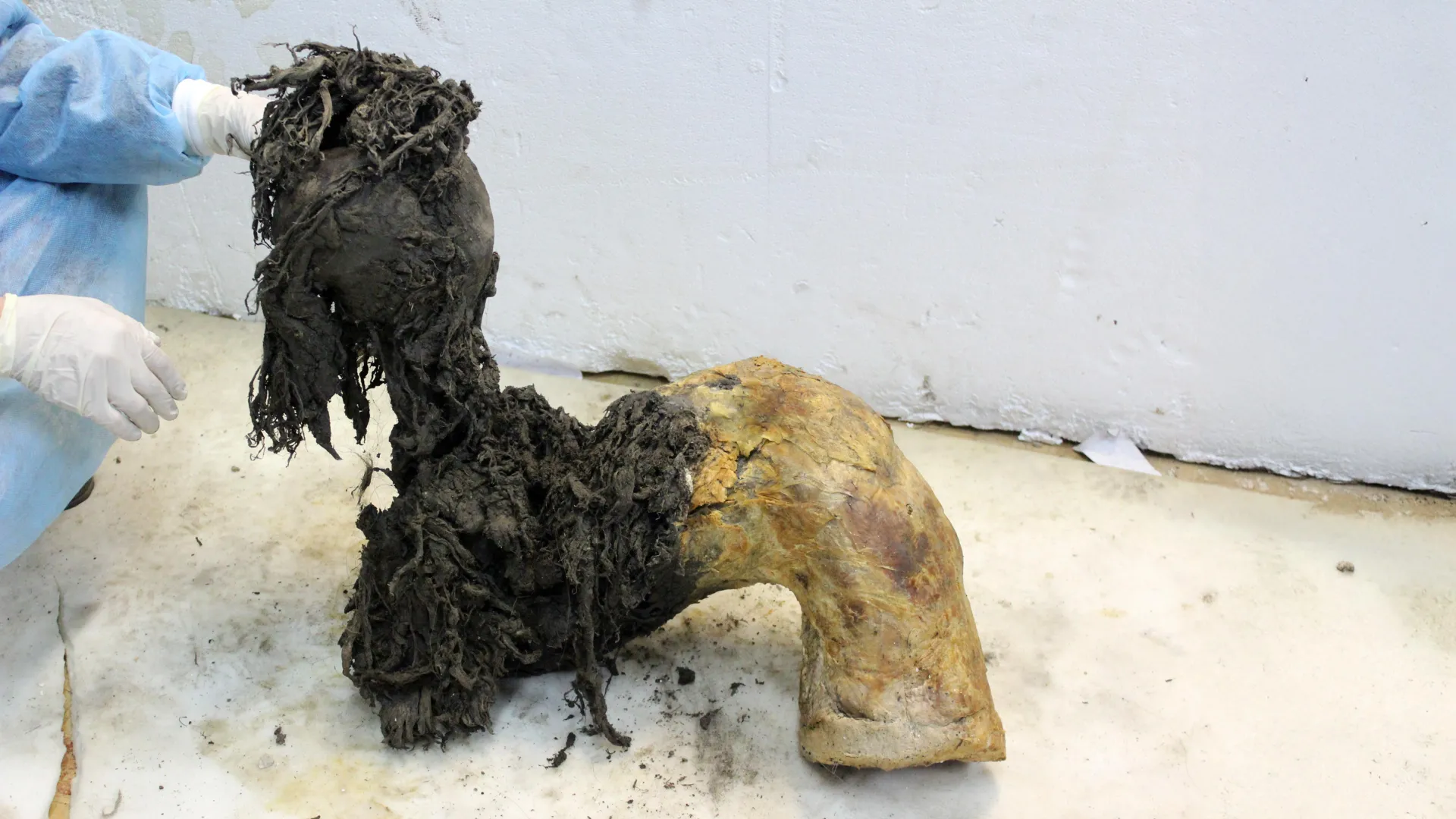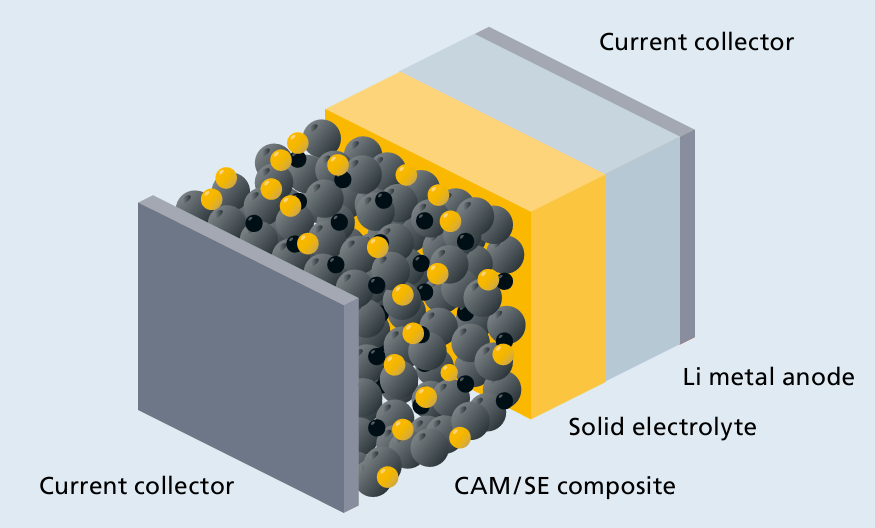Scientists recover 40,000-year-old mammoth RNA still packed with clues – ScienceDaily

Report on the Sequencing of Ancient RNA from a Woolly Mammoth and its Implications for Sustainable Development
1.0 Introduction
A study conducted by researchers at Stockholm University has resulted in the first successful isolation and sequencing of RNA molecules from a woolly mammoth preserved in Siberian permafrost for approximately 40,000 years. This research, published in the journal Cell, represents a significant advancement in the field of palaeogenetics. The findings demonstrate that RNA can remain stable over geological timescales, providing unprecedented insights into the biology of extinct species. This breakthrough has direct implications for several United Nations Sustainable Development Goals (SDGs), particularly those related to biodiversity, climate action, and scientific innovation.
2.0 Key Scientific Breakthroughs
The study overcomes previous limitations in ancient biomolecule research, which had primarily focused on DNA and proteins. The successful recovery of RNA, a molecule significantly less stable than DNA, establishes a new frontier in understanding prehistoric life.
- Oldest RNA Sequenced: The RNA molecules recovered from the mammoth specimen, known as Yuka, are the oldest ever sequenced, pushing the temporal limits of transcriptomic analysis back by tens of thousands of years.
- Functional Genetic Information: Unlike DNA, which provides a static blueprint of an organism’s genome, RNA reveals which genes were actively expressed, or “turned on,” at the time of death. This offers a dynamic view of the animal’s physiological state.
- Validation of Ancient Signals: The authenticity of the mammoth RNA was confirmed through the identification of muscle-specific microRNAs and rare genetic mutations unique to the mammoth lineage, providing a “smoking-gun” demonstration of their origin.
3.0 Analysis of the Yuka Mammoth Specimen
The research team analyzed frozen muscle tissue from the Yuka mammoth, yielding specific data on its final moments of life.
- Gene Expression Patterns: The analysis identified active RNA molecules coding for proteins involved in muscle contraction, metabolism, and cellular stress responses.
- Evidence of Physiological Stress: The presence of RNA associated with cell stress aligns with prior research suggesting the mammoth was attacked by predators, such as cave lions, shortly before its death.
- Regulatory Molecules Identified: Researchers successfully identified non-protein-coding RNAs, including microRNAs, which regulate gene activity. This is the first time real-time gene regulation has been observed in a prehistoric animal.
4.0 Relevance to Sustainable Development Goals (SDGs)
This research contributes valuable knowledge and technological advancements that support the achievement of key SDGs.
4.1 SDG 15: Life on Land
- Understanding Extinction: By providing insights into the physiological responses of megafauna to environmental pressures, this research helps model the processes that lead to extinction. This knowledge is critical for developing strategies to protect currently endangered species and halt biodiversity loss.
- Informing Conservation Genetics: Studying the active genes of a species adapted to extreme cold offers a functional genetic baseline that can inform conservation efforts for modern Arctic species facing rapid environmental change.
4.2 SDG 13: Climate Action
- Modeling Climate Adaptation: The woolly mammoth was highly adapted to the Ice Age climate. Analyzing its active genetic responses provides a case study in how species cope with extreme climate conditions. This data can enhance our ability to predict how contemporary ecosystems will respond to ongoing climate change.
- Paleoclimatology Data: The preservation of delicate biomolecules like RNA in permafrost underscores the importance of these environments as archives of past climate and biological history, reinforcing the need for their protection.
4.3 SDG 9: Industry, Innovation, and Infrastructure
- Advancing Scientific Infrastructure: The development of techniques to isolate and sequence highly degraded RNA from ancient samples represents a major technological innovation. This expands the capabilities of scientific research and opens new avenues for discovery in palaeontology and molecular biology.
5.0 Conclusion and Future Outlook
The successful sequencing of mammoth RNA demonstrates that these molecules can survive far longer than previously believed, fundamentally altering the scope of ancient life studies. Future research will focus on integrating transcriptomic (RNA) data with genomic (DNA) and proteomic (protein) information to build a comprehensive biological profile of extinct species.
- Potential for Paleovirology: The durability of RNA suggests it may be possible to recover and sequence RNA viruses, such as influenza and coronaviruses, from Ice Age remains, contributing to our understanding of viral evolution.
- Holistic Biological Reconstruction: A multi-faceted approach combining DNA, RNA, and proteins will allow for a more complete reconstruction of the biology of extinct animals, revealing layers of information that have been frozen in time. This contributes to a deeper understanding of Earth’s biological heritage, directly supporting global goals for education (SDG 4) and the preservation of life on land (SDG 15).
Analysis of the Article in Relation to Sustainable Development Goals
1. Which SDGs are addressed or connected to the issues highlighted in the article?
- SDG 9: Industry, Innovation, and Infrastructure
- SDG 13: Climate Action
- SDG 15: Life on Land
- SDG 17: Partnerships for the Goals
2. What specific targets under those SDGs can be identified based on the article’s content?
SDG 9: Industry, Innovation, and Infrastructure
-
Target 9.5: Enhance scientific research, upgrade the technological capabilities of industrial sectors in all countries… encouraging innovation.
The article is centered on a major scientific innovation: the first-ever successful isolation and sequencing of RNA from an Ice Age animal. The research “pushed the limits of DNA recovery past a million years” and explored “whether we could expand RNA sequencing further back in time.” This represents a significant enhancement of scientific research and technological capability in the field of palaeogenomics.
SDG 13: Climate Action
-
Target 13.3: Improve education, awareness-raising and human and institutional capacity on climate change mitigation, adaptation, impact reduction and early warning.
The article provides a concrete example of the impact of past climate change, stating that “as the climate warmed, the woolly mammoths gradually vanished.” By studying the biology of a species that went extinct due to climate warming, the research contributes to the body of knowledge and raises awareness about the long-term consequences of climate shifts on biodiversity.
SDG 15: Life on Land
-
Target 15.5: Take urgent and significant action to reduce the degradation of natural habitats, halt the loss of biodiversity and… protect and prevent the extinction of threatened species.
The research directly addresses the study of biodiversity by providing unprecedented insights into an extinct species. The article notes that the findings “could fundamentally reshape our understanding of extinct megafauna.” This deepens the knowledge base about past life on land and the factors leading to extinction, which is essential for informing current conservation strategies and efforts to halt biodiversity loss.
SDG 17: Partnerships for the Goals
-
Target 17.6: Enhance… international cooperation on and access to science, technology and innovation and enhance knowledge-sharing.
The study is a product of multi-institutional and international collaboration. The lead author, formerly at Stockholm University, is now at the Globe Institute in Copenhagen and collaborated with “researchers at SciLifeLab and the Centre for Palaeogenetics, a joint initiative between Stockholm University and the Swedish Museum of Natural History.” The article also credits a researcher from the Arctic University Museum of Norway (UiT). This exemplifies the kind of partnership required to advance science and technology.
3. Are there any indicators mentioned or implied in the article that can be used to measure progress towards the identified targets?
SDG 9: Industry, Innovation, and Infrastructure
-
Implied Indicator: Development of novel scientific techniques and high-impact publications.
The article itself, published in the journal Cell, serves as an indicator of high-impact scientific output. The development of a method to sequence RNA that is “nearly 40,000 years” old is a direct measure of technological and scientific progress. The article states this is the “first time ever” this has been achieved, marking a clear innovative milestone.
SDG 13: Climate Action
-
Implied Indicator: Scientific research output that increases understanding of climate change impacts.
The study provides new data and a case study on the effects of past climate change on a major species. The publication of these findings contributes to the global knowledge base, an implied measure of progress in understanding climate impacts. The research connects the mammoth’s disappearance to the warming climate at the end of the last Ice Age.
SDG 15: Life on Land
-
Implied Indicator: Generation of genomic and transcriptomic data for extinct species.
The successful sequencing of “more than 20,000 protein-coding genes” and various microRNAs from the mammoth provides a new layer of biological data. This information, which “cannot be obtained from DNA alone,” is a measurable contribution to the global understanding of biodiversity, both past and present.
SDG 17: Partnerships for the Goals
-
Implied Indicator: Number of joint international and inter-institutional scientific projects.
The article explicitly mentions the collaboration between multiple prestigious institutions: Stockholm University, the Globe Institute (Copenhagen), SciLifeLab, the Swedish Museum of Natural History, and the Arctic University Museum of Norway (UiT). The successful outcome of this joint project serves as a qualitative indicator of effective scientific partnership.
4. Summary Table of SDGs, Targets, and Indicators
| SDGs, Targets and Indicators | Targets | Indicators |
|---|---|---|
| SDG 9: Industry, Innovation, and Infrastructure | 9.5: Enhance scientific research, upgrade the technological capabilities of industrial sectors in all countries… encouraging innovation. | Implied: Development of novel scientific techniques (ancient RNA sequencing) and publication of high-impact scientific research. |
| SDG 13: Climate Action | 13.3: Improve education, awareness-raising and human and institutional capacity on climate change mitigation, adaptation, impact reduction and early warning. | Implied: Scientific research output that increases understanding of the historical impacts of climate change on biodiversity. |
| SDG 15: Life on Land | 15.5: Take urgent and significant action to reduce the degradation of natural habitats, halt the loss of biodiversity and… protect and prevent the extinction of threatened species. | Implied: Generation of genomic and transcriptomic data for extinct species to deepen the knowledge base on biodiversity. |
| SDG 17: Partnerships for the Goals | 17.6: Enhance… international cooperation on and access to science, technology and innovation and enhance knowledge-sharing. | Implied: Number of successful joint international and inter-institutional scientific research projects. |
Source: sciencedaily.com
What is Your Reaction?
 Like
0
Like
0
 Dislike
0
Dislike
0
 Love
0
Love
0
 Funny
0
Funny
0
 Angry
0
Angry
0
 Sad
0
Sad
0
 Wow
0
Wow
0


















































.jpg.webp?itok=0ZsAnae9#)





/environment-climate-change-and-health-(ech)/water-sanitation-hygiene-and-health-(wsh)/landfill-tuvalu-36092.tmb-1200v.jpg?sfvrsn=5c21fe40_1#)















